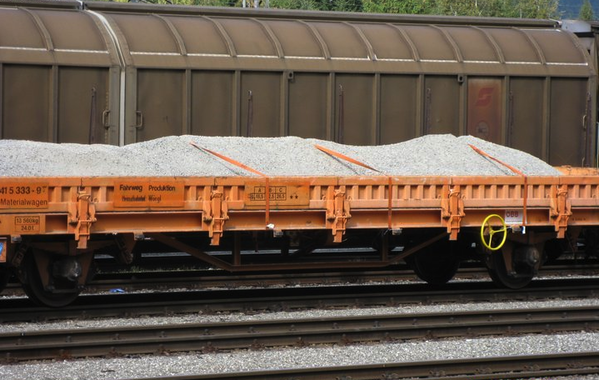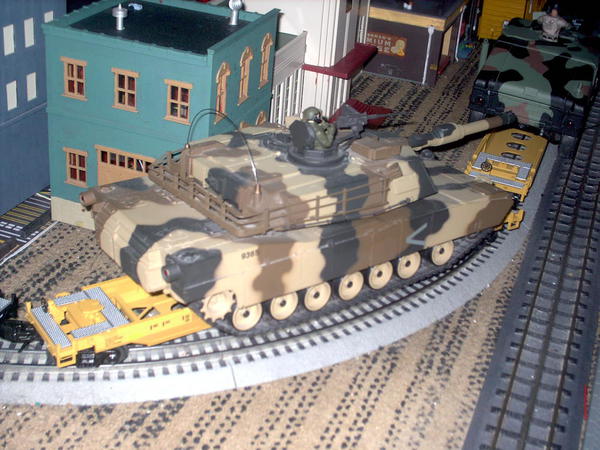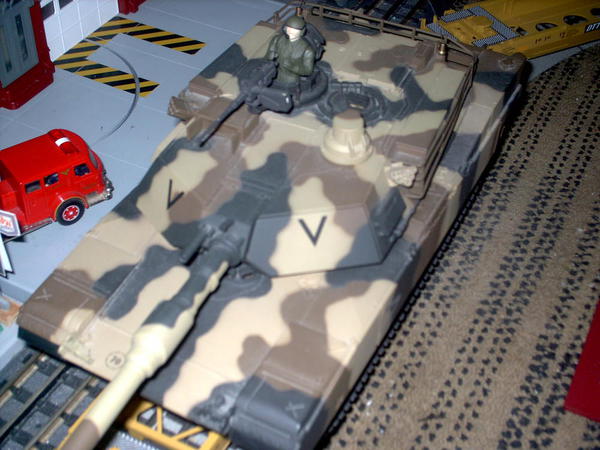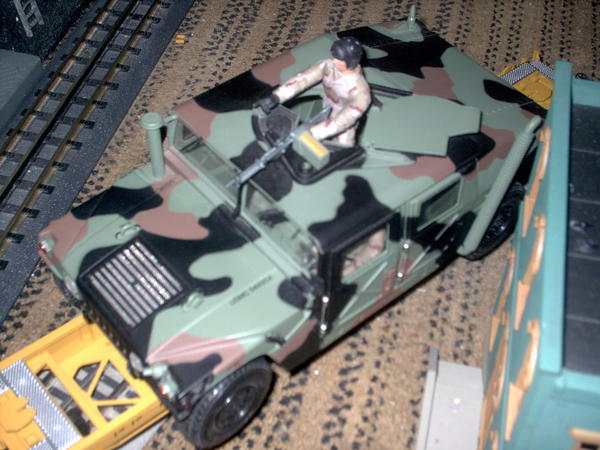First, I am not attempting to put anyone's work down. Most of it is better than my own (But in building a new layout in a new state I'll try to rectify that.) and some is truly amazingly detailed. I only want to correct some errors so people can make some scenes more realistic... for those who want the additional realism.
I'm talking about military trains, cargo waiting for shipment or being stored following shipment. My credentials are 10 years active duty in the Army (As an Ordnance Corps officer) and Marine Corps (As a Gunnery Sergeant in charge of supply and distribution of Ordnance and Quartermaster gear), and many, many loads being prepped and shipped and received and stored before being issued. Many went by train, some on ships or airplanes, and some convoyed to their destination. I am making these points based on that experience.
Military vehicles were almost NEVER shipped with guns mounted. The exceptions were main tank weapons and artillery pieces. These guns had muzzles capped with a canvas "boot" or something similar, and breeches were sealed and banded. Main guns on turreted vehicles were shipped with
the guns secured in some sort of barrel lock. It varied with the type of carriage, some pointing forward and some pointing to the rear..
No machine guns, rocket launchers, mortars, etc. were mounted, but were shipped separately and installed at the final destination, usually at a nearby military facility
Likewise antennae, external lighting (except those built into or on the vehicle), OEM tools, cables, chains, duffle, etc were crated and accompanied the vehicles either on the same conveyance or in a separate boxcar or on a flat.
Plow blades, rippers, cabs, and such were dismounted and shipped with the vehicles.
Canvas was rolled or crated and shipped with the vehicle, often in the beds or strapped to the horizontal surfaces where it was feasible.
Glass was always protected. Door windows were rolled down, windshields were "cased" in plywood with metal bands, and those capable of being fold down were. Lights and smaller glass surfaces were taped and some were covered with protective paper and taped.
Often canvas seats were dismounted and shipped in boxes or crates carried in or on the vehicle.
I was common to ship spare parts in crates on the same trains, even on the same cars.
Unit markings, slogans, insignias, etc were painted on at the final destination. Only vehicle registration numbers and a few other bits of info, specific to the vehicle and generic, were stenciled on at the factory or depot of origin. (Tire pressure, fuel, etc.)
EVERYTHING was blocked and chained or banded securely to the train cars, semi trailers, parent vehicles, aircraft decks, etc. and paperwork was attached in sealed envelopes to the outside of the equipment near the drivers seat.
Allow for security personnel who accompanied virtually all shipments. They weren't generally obvious, but they were universally present.
Different info applies to aircraft, guided missiles, ammunition, water craft, construction equipment, fuels, food stuffs, building materials, communications gear, and many others. DOD and each branch of the service had rules no end, after all, they are all government agencies and the top 20 list of things they must do id created rules and paperwork.
I hope I have offended no one and provided valuable information to those who can use it. Please feel to feel free to use what you will and to tell me to kiss off if you so choose.
Tom


















